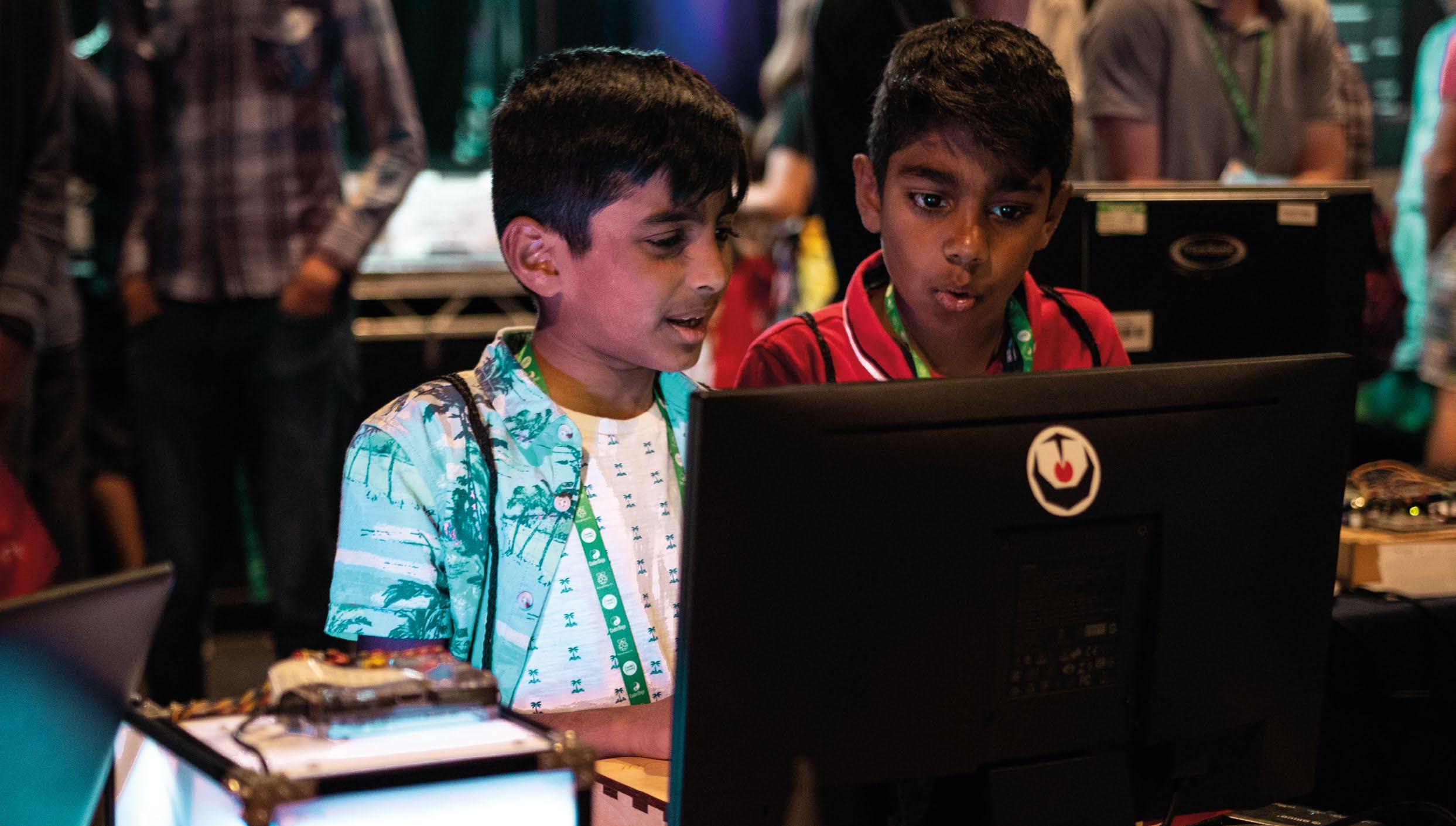
5 minute read
CODE TRACING
Reading code before writing it is vital, and code tracing is an ideal activity to develop learners’ program comprehension
Developed in the early 2000s, code tracing is a well-established approach to help learners build their program comprehension. Put simply, it involves reading and analysing code before running it, to predict its outcome. Novice programmers should be competent in code tracing before they can confidently write programs of their own. Here, we explore code tracing, its benefits, how it fits in with the concept of the notional machine, and how you can use code tracing in the classroom.
Advertisement
What is code tracing?
It is widely understood that young learners should ideally have developed some reading skills before they begin learning to write. Similarly, in computing, there is a body of evidence to suggest that code tracing, a form of code reading, is an
SUMMARY
Tracing involves:
■ Reading the code ■ Interpreting the meaning ■ Recording the flow and/or outputs
Benefits of tracing:
■ Fosters program comprehension ■ Improves code writing ■ Supports learners in analysing and explaining code ■ Exposes misconceptions ■ Reduces cognitive load ■ Helps learners develop a consistent notional machine effective precursor to code writing and independent programming.
When tracing code, learners review chunks of code, or whole programs, and record their expected behaviour and execution flow at various stages. They can capture this through annotation as well as by recording the program output at each stage. You may ask learners to trace a piece of code, predict the outcome, and then guide them through the code, line by line, to test their prediction. Typically, you’ll ask learners to predict away from the computer, to ensure they focus on reading rather than executing the code. You could also give basic level, followed by explaining the code, and finally progressing to writing. Many other studies have been completed based on this theory. Hertz and Jump, who developed the trace-based teaching model, found that starting a class with 20–30 minutes of tracing increased attainment and decreased dropout rates.3 A 2004 study found that learners who could trace effectively less than 50 percent of the time could not explain the code effectively.4 Code tracing can help to reduce the cognitive load placed on learners. By focusing learners’ efforts on existing and working programs, and by answering specific
learners short sections of code in the form of worked examples (see page 90), or ask them to complete trace tables where some values are provided, and they can use code tracing to record the missing values. Then, with this secure understanding, you can allow learners to create their own programs featuring the concepts they have traced. While there is no single approach to tracing, there are some clearly defined methods, such as TRACS1 tracing, which may be helpful for learners to follow.
Benefits
Harrington2 identified that when learning to program, learners build their understanding in a hierarchical way. Tracing is at the most questions, educators can avoid unnecessary extraneous load being placed on learners. If learners have the opportunity to trace code, they can comprehend the code and its function before seeing it in action. Many other subjects explore similar ideas, such as the Talk for Writing framework in literacy, and progressing from concrete objects to abstract numerals in mathematics. This approach also helps develop learners’ understanding of the notional machine — how the code is executed.
If we accept that there is a broad consensus advocating code tracing as an effective strategy with a range of evidence to support the claim, what should we consider when using it in the classroom?
The notional machine
When tracing code, learners apply their current understanding of how a machine works: their notional machine. This concept was first introduced by Benedict du Boulay and describes the conceptual model that learners have about how a computer processes instructions and data.5
The notional machine can look very different depending on the type of programming language being used. In Scratch, it is simple to run more than one process concurrently (threading), whereas in most text-based languages (including Python), this is more complex. This has implications for how we begin to teach programming in Scratch. Learners may demonstrate that they can use threads, but may not understand how the machine handles them. This gap in their notional machine understanding can lead to gaps in their knowledge, or to misconceptions. If you encourage learners to use threads in Scratch without addressing the notional machine, it may lead to problems later when learners find threading more difficult to achieve in Python.
In-context application
You can incorporate code tracing in the classroom as a standalone activity, or as part of a broader approach:
■ The PRIMM (Predict–Run–Investigate–Modify–Make) approach is ideally suited to tracing, as PRIMM requires learners to Predict as its first step, which involves reading and tracing (see page 22). ■ You can begin a programming activity or project by providing learners with an existing project or snippet of code for them to trace.
REFERENCES
1 Donaldson, P., & Cutts, Q. (2018). Flexible low-cost activities to develop novice code comprehension skills in schools. Proceedings of the 13th Workshop in Primary and Secondary Computing Education, 1-4.
helloworld.cc/tracing1
2 Harrington, B., & Cheng, N. (2018). Tracing vs. Writing Code: Beyond the Learning Hierarchy. Proceedings of the 49th ACM Technical Symposium on Computer Science Education, 423-428. helloworld.cc/tracing2 3 Hertz, M., & Jump, M. (2013). Trace-based teaching in early programming courses. Proceedings of the 44th ACM Technical Symposium on Computer Science Education, 561-566. helloworld.cc/tracing3 4 Lister, R., Adams, E. S., Fitzgerald, S., Fone, W., Hamer, J., Lindholm, M., McCartney, R., Moström, J. E., Sanders, K., Seppälä, O., Simon, B., & Thomas, L. (2004). A multi-national study of reading and tracing skills in novice programmers. ACM SIGCSE Bulletin, 36(4), 119-150. helloworld.cc/tracing4 5 Du Boulay, B. (1986). Some Difficulties of Learning to Program. Journal of Educational Computing Research, 2(1), 57-73. helloworld.cc/tracing5
■ Tracing is also a great way to check learners’ understanding of the capabilities of the notional machine. Using examples in which specific misconceptions may lead to an incorrect solution, tracing can expose and help address this misconception.
If you would like to try some code tracing activities, the Teach Computing Curriculum ‘Programming’ units include examples (helloworld.cc/tcctracing).










